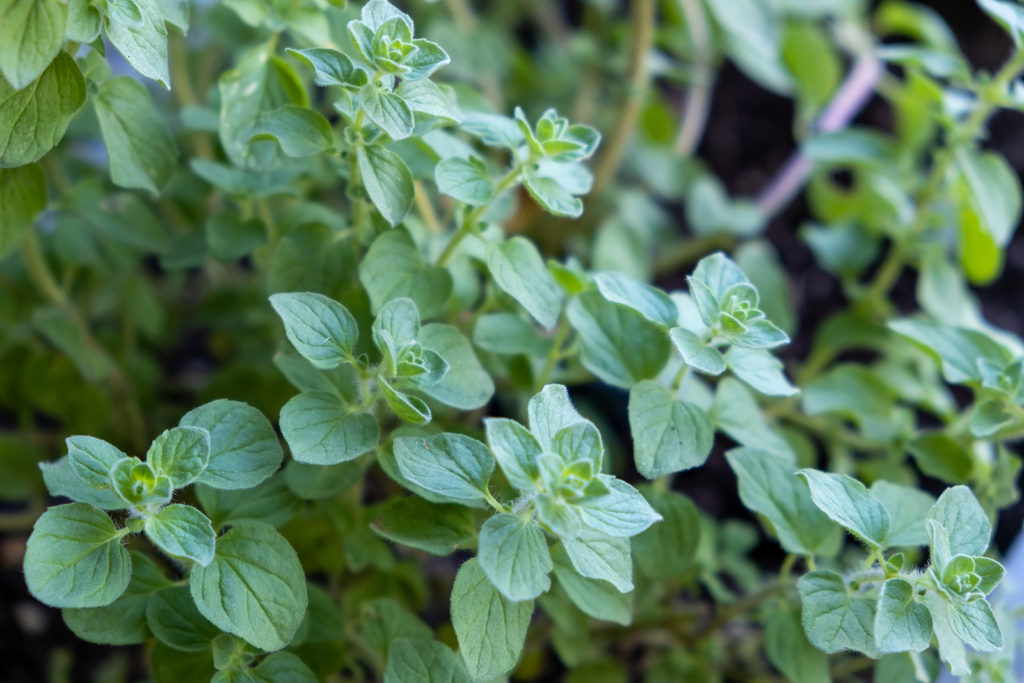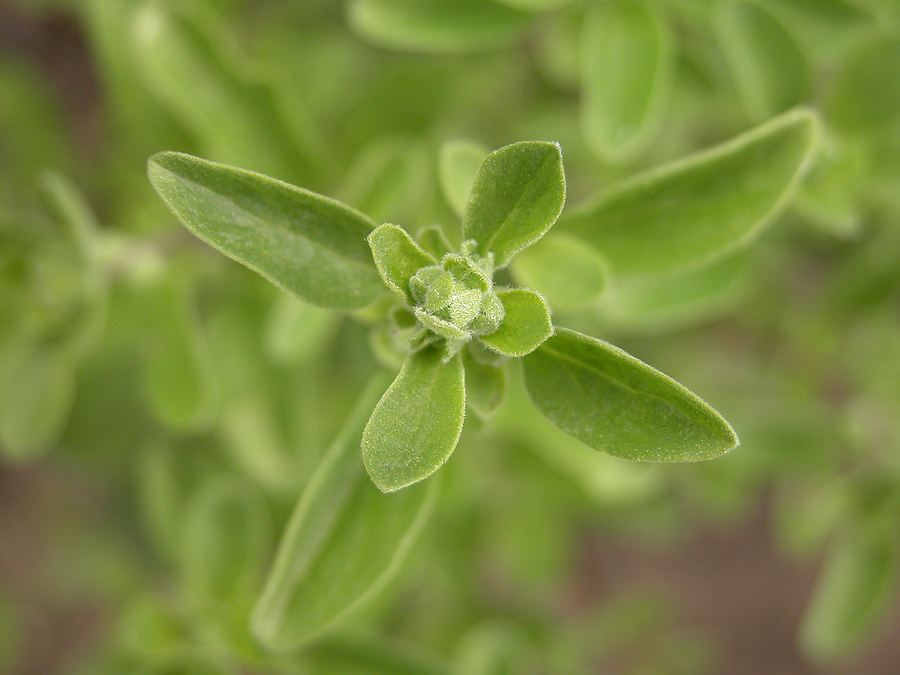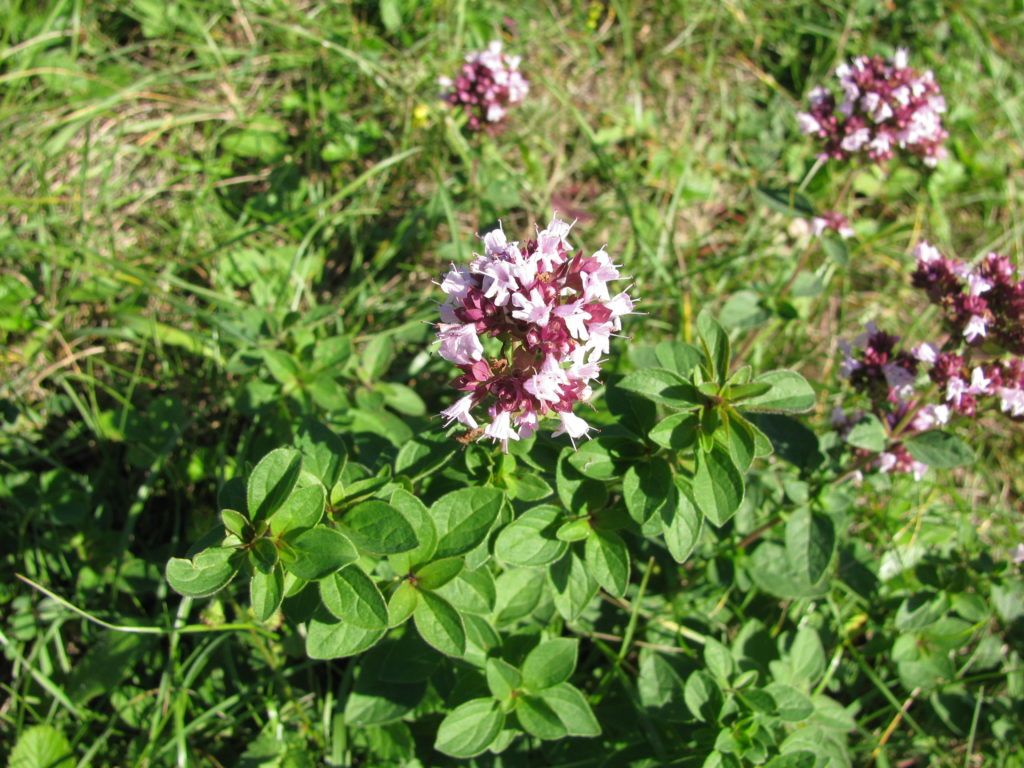You can learn how to grow marjoram in minutes. Marjoram, also called sweet marjoram and knotted marjoram, is a tender perennial grown as an annual. The flower buds look like little knots and so the name knotted marjoram. Marjoram has a savory, sweet, pungent aroma. It is a primary herb used in the preparation of Mediterranean food.
Marjoram is sometimes confused with oregano. Marjoram is a subspecies of oregano; they are not the same. The leaves of both plants are used in cooking. Marjoram is sweet and lightly flavored. Oregano is robust and spicy-flavored. Marjoram leaves are oval and gray-green; oregano leaves are oval and dark green. Marjoram is grown smaller than oregano which can grow tall and broad.
Articles of interest:
- How to Grow Herbs
- How to Start an Herb Garden
- Best Herbs for Container Growing
- Herbs for Cool Season Growing
- Grow 20 Herbs for Cooking
Here is your complete guide to growing marjoram.

Where to plant marjoram
- Best location: Plant marjoram in full sun; it will tolerate light shade.
- Soil preparation: Grow marjoram in loose, well-drained soil. Marjoram can thrive in poor soil that is well-drained. Marjoram prefers a soil pH of 6.7 to 7.0.
When to plant marjoram
- Seed starting indoors: To get a head start on the season, sow marjoram as early as 4 weeks before the average last frost date in spring for transplanting out after the last frost. Marjoram is slow to germinate; the optimal temperature for germination is 70°F.
- Transplanting to the garden: Set out transplants on the average date of the last frost in spring. Marjoram also can be grown from root divisions taken in fall, overwintered indoors, and set out in spring.
- Outdoor planting time: Sow marjoram in the garden after the last frost in spring.
How to plant marjoram
- Planting depth: Sow marjoram seed ¼ inch deep.
- Spacing: Space marjoram plants 6 to 12 inches apart. Space rows 18 to 24 inches apart.
- How much to plant: Grow 2 to 4 plants for cooking and kitchen use; grow 6 to 10 plants for preserving.
Marjoram companion plants
- Companion planting: Marjoram grows well with all vegetables and herbs. Grow marjoram with garlic chives, sage, rosemary, and chamomile. Marjoram is said to improve the growth and flavor of nearby herbs.

Watering and feeding marjoram
- Watering: Give marjoram regular even water until it is established. Once established water marjoram sparingly allowing the soil to dry between waterings. Moist soil will cause marjoram to be less flavorful.
- Feeding: Foliar feed marjoram by spraying with compost tea or liquid seaweed extract 2 to 3 times during the growing season.
Marjoram care and maintenance
- Care: Keep marjoram pinched back to induce bushy growth and enhance flavor. Prune in late spring before the plant flowers to encourage vegetative growth; prune again in midsummer so that it does not become woody. Marjoram can sprawl; either cut it back or give it plenty of room to grow. Replace 3 or 4-year-old plants.
- If you cut marjoram back by one-third when flower buds appear; new leaves will form to extend the harvest. (Dry and store the clippings for seasoning.) In cold-winter regions, divide plants in fall and over-winter the divisions indoors in a sunny window for re-planting out in spring.
- Mulching: Mulch marjoram in warm weather to protect roots from too much heat.

Container growing marjoram
- Container growing: Marjoram grows easily as an annual in containers. Select a container 6 inches deep. Potted marjoram can be grown indoors in a bright, sunny window.
- Winter growing: Marjoram will not survive frost. Grow marjoram as an annual indoors in winter. Grow marjoram in a sunny window or under fluorescent lights.
Marjoram pests and diseases
- Pests: Marjoram has no serious pest problems. Aphids and spider mites may attack marjoram but they can be sprayed away with a strong stream of water.
- Diseases: Marjoram has no serious disease problems. Marjoram grown in wet soil or wet weather may suffer from root rot or damping off.
How to harvest marjoram
- When to harvest: Marjoram is ready for harvest 60 days after sowing. Cut fresh leaves as needed once plants are 4 to 6 inches tall. The flavor of marjoram leaves intensifies in hot weather. Cut-and-come-again harvesting will renew plants. The flavor is best before the plant flowers. You can extend the harvest by removing the flower buds as they form.
- How to harvest: Snip leaves with a garden pruner or scissors.
Marjoram in the kitchen
- Flavor and aroma: The flavor of marjoram is similar to mild oregano with a hint of balsam, slightly pungent.
- Leaves: Use leaves and flowers fresh or dried; add marjoram to beef, lamb, roast, poultry, fish, green vegetables, carrots, cauliflower, eggplants, eggs, mushrooms, parsnips, potatoes, squash, and tomatoes. Add fresh or dried leaves to stews sautés, marinades, dressings, herb butter, flavored vinegar, cheese spreads, soups, and stuffings. Use marjoram with meats, especially poultry, and sausage; add marjoram lightly to potato dishes and soups.
- Cooking: Add marjoram near the end of cooking.
- Culinary companions: Basil, bay, garlic, mint, onion, rosemary, sage, and thyme are good cooking companions for marjoram.
Preserving and storing marjoram
- Refrigeration: Keep fresh marjoram in a plastic bag in the refrigerator for 3 to 4 days.
- Drying: Dry leaves in the refrigerator for best flavor; spread leaves on a baking sheet covered with a paper towel. You can also dry leaves in an uncovered bowl; stir the leaves daily; they will dry in 2 to 7 days. Leaves can be dried in a mesh bag; hang the bag in a warm, dry, shaded place.
- Storing: Store dried leaves and flowers in an airtight container. Marjoram retains much of its flavor when dried.

Marjoram propagation
- Seed: Marjoram seed can be slow to germinate outdoors; germination indoors can happen in about 14 days.
- Cuttings and layering: Marjoram can be grown from cuttings and stem layering in spring or early summer. Take cuttings in the fall and grow them indoors through the winter. Layer plants by weighing down stems to the soil; new roots will grow and new plants can be divided.
- Division: Marjoram can be grown from root divisions in early spring. Divide roots in autumn and bring roots indoors in pots to grow through winter and then plant out in spring.
Marjoram varieties to grow
- Sweet marjoram is Origanum marjorana.
- Oregano is Origanum vulgare.
- Italian marjoram or Sicilian marjoram: Origanum x majoricum is similar to sweet marjoram; slightly more pungent; it has wider, greener leaves than sweet marjoram.
- Pot marjoram (O. onites) has a stronger flavor than sweet marjoram.
- Oregano has several named varieties; marjoram does not.
Get to know marjoram
- Botanical name and family: Origanum marjorana (Lamiaceae—mint family)
- Mediterranean
- Type of plant: Marjoram is an upright branching tender perennial that is often grown as an annual.
- Growing season: Summer
- Growing zones: Marjoram grows outdoors best in Zones 9 and 10.
- Hardiness: Marjoram is hardy to zones 9; it is grown as an annual in cooler regions.
- Plant form and size: Marjoram grows 8 to 24 inches tall in a tight clump of upright branching stems; stems are red when young and become semi-woody as they age.
- Flowers: Marjoram has small, delicate flowers that can be lavender, pink, and white; unopened flower clusters in late summer resemble knots giving the plant its common name knotted marjoram. The “knots” have four sides and appear singly or in groups of two or more.
- Bloom time: Marjoram flowers from mid to late summer.
- Leaves: Marjoram has small (less than an inch long), oval, light-green fuzzy, sweetly fragrant leaves, greenish-gray on the underside, grow on multi-branched reddish stems. Leaves often have scoop-shaped—edges higher than the midrib.
Also of interest:
- Anise
- Anise Hyssop
- Arugula
- Basil
- Bay
- Bee Balm
- Borage
- Calendula
- Caraway
- Catnip
- Chamomile
- Chervil
- Chives
- Cilantro-Coriander
- Clary
- Costmary
- Cress
- Dill
- Fennel, Sweet
- Horseradish
- Hyssop
- Lavender
- Lemon Balm
- Lemongrass
- Lemon Verbena
- Lovage
- Marjoram
- Mint
- Nasturtium
- Oregano
- Parsley
- Perilla
- Rosemary
- Sage
- Salad Burnet
- Savory
- Scented Geranium
- Shiso
- Sorrel
- Stevia
- Sweet Cicely
- Tarragon
- Thyme
Related articles:
Best Herbs for Container Growing
Planning the Home Fruit Garden
Garden Planning Books at Amazon:
- Vegetable Garden Almanac & Planner
- Kitchen Garden Grower’s Guide Vegetable Encyclopedia
- Vegetable Garden Grower’s Guide
- Tomato Grower’s Answer Book















